(Greek: γύρος, literally ‘turn’) it stands for a Greek dish of meat roasted on a vertical spit and usually served in a pita bread with tomato, onion, and tzatziki sauce.
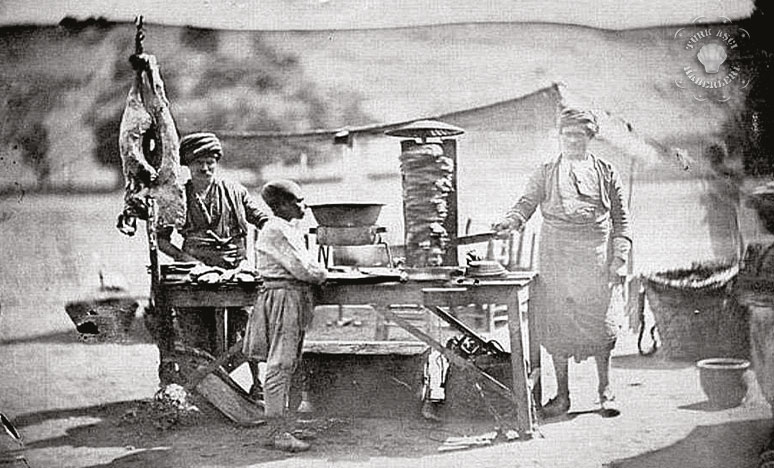
Though grilling meat stacked on a skewer has ancient roots in the Eastern Mediterranean with evidence from the Mycenaean Greek and Minoan periods. Grilling on a vertical spit of stacked meat slices and cutting it off as it cooks was developed in the 19th century in Ottoman Bursa. The meat used was veal, lamb, mutton or chicken. To make yeeros, pieces of meat are placed on a tall vertical spit, which turns in front of a source of heat, originally charcoal. If the meat is not fatty enough, strips of fat are added so that the roasting meat always remains moist and crisp. The rate of roasting can be adjusted by varying the strength of the heat and the distance between the heat and the meat. The outside of the meat is sliced vertically in thin, crisp shavings when done. It is generally served in an oiled, lightly grilled piece of pita, rolled up with various salad garnishes and sauces.
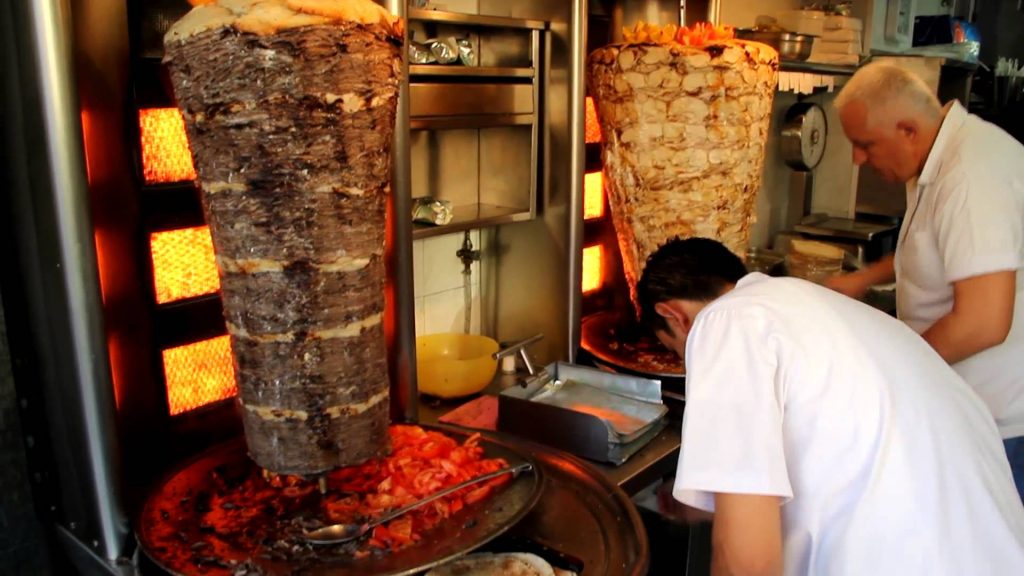
In Greece and Cyprus, the meat is typically pork or chicken; with veal gyros occasionally found, referred to as “doner” (ντονέρ). In Athens, and most of Greece, a “pita yeero” will contain tzatziki, tomato, onion and/or fried potatoes in addition to the meat.
Pita bread is about 20 cm in diameter. Yeeros are also served in sandwich-type bread in northern Greece.
It is said that in Thessaloniki one will find the biggest pita and yeeros; there, an order will typically include tomato, onion, fried potatoes, mustard and/or ketchup and an optional sauce, most commonly tzatziki or ktipití (a spicy feta cheese spread), in addition to the meat.

Yeeros were introduced to the United States via Chicago between 1965 and 1968. The name gyros is most commonly used in American and Greek-American restaurants and stores
Several people claim to have brought gyros to Chicago and been the first to mass-produce them. George Apostolou claims he served the first gyros at the Parkview Restaurant in 1965. In 1974, he opened a manufacturing plant called Central Gyros Wholesale.
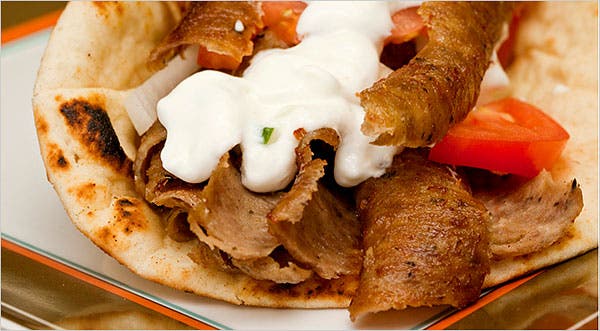
Peter Parthenis claims he mass-produced them at Gyros Inc., in 1973, a year before Apostolou. In 1968, at The Parthenon restaurant, Chris Liakouras developed an early version of the modern vertical rotisserie gyros cooker, and popularized gyros by passing out samples free to customers. The vertical broiler was later refined by Tom Pappas and others at Gyros incorporated. Pappas would go on to develop the modern commercial recipe for gyros in the United States, substituting compressed meat for slices of beef, lamb and pork, or beef and lamb (for Halal distribution). They achieved success as an independent manufacturer of gyros in Florida during the early 1980s, and popularizing it in the southeastern US (Orlando Sentinel, 1981). They have since spread to all parts of the country, but the gyro is still identified as part of Chicago’s working class cuisine.
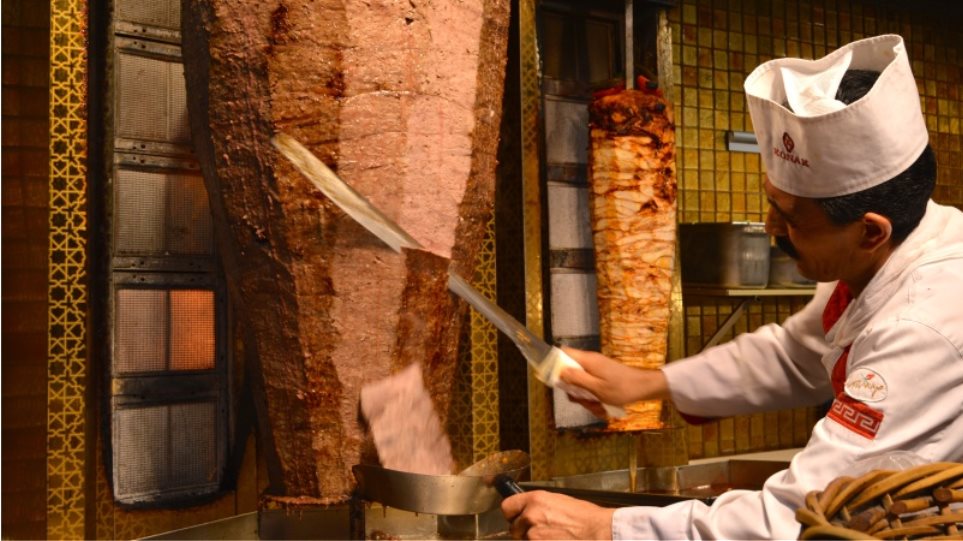
Yeero, sawarma and doner are not the only known vertical street food known in the world… Tacos al pastor were created in the 1930s in Puebla, Mexico, by Lebanese immigrants who introduced the region to classic shawarma: roast lamb served on pita bread. This creation was originally known as tacos árabes (Arab tacos), and used meat cooked on a vertical, or upright, grill. Shawarma is the Arabic word for ‘turning’, referring to the turning rotisserie.
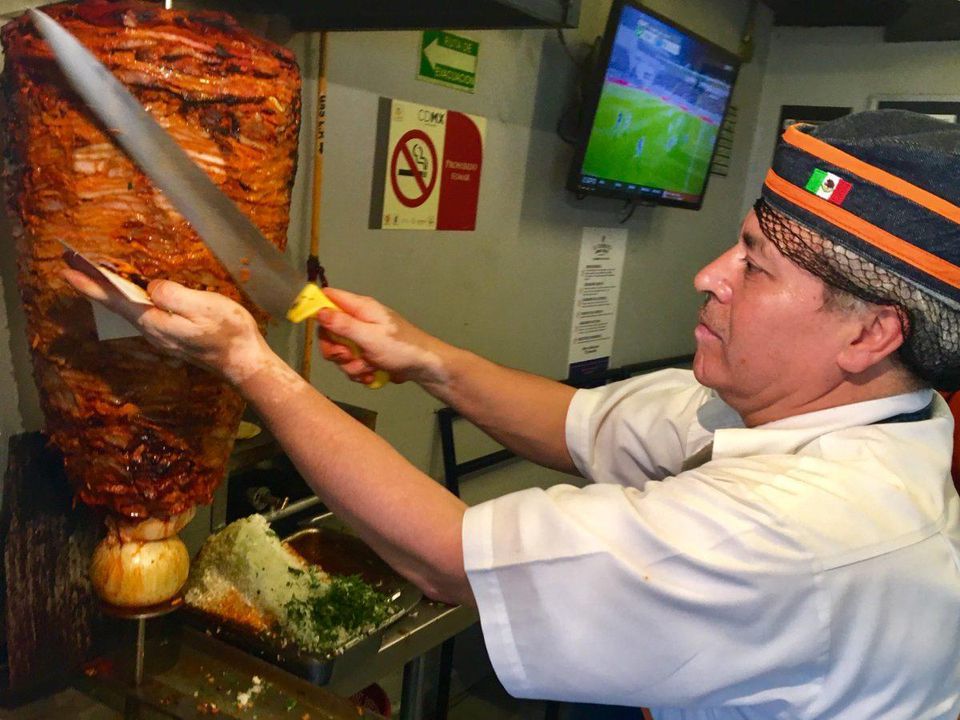
“The technique of cooking meat on a vertical spit would eventually evolve into tacos al pastor, but the main difference is that tacos árabes used lamb. Mexican marinated pork replaced lamb on the spit, and cilantro and onions were added to the mix.
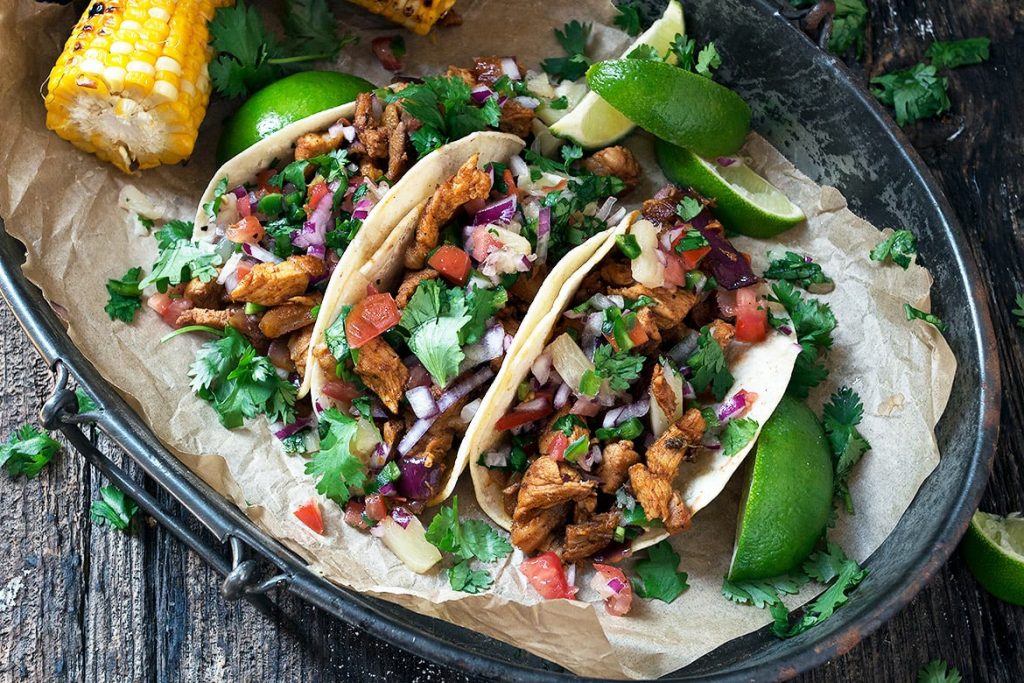
It didn’t take long, in a country already enamored of wrapping meats and other savories in a soft corn tortilla, for the taco and the shawarma traditions to collide. The lamb became pork, and the classic Middle Eastern yogurt sauces were replaced by spicy Mexican chipotle sauce. The marinade for the meat, meanwhile, remained fairly similar to the Levantine original, heavy with cumin, oregano, and onions.
However you have it, whatever you call it, anytime you eat it and wherever you are when you have it… it’s an all time delicious!!! Maybe Greek Yeeros a little more delicious than others (at least for me)!!

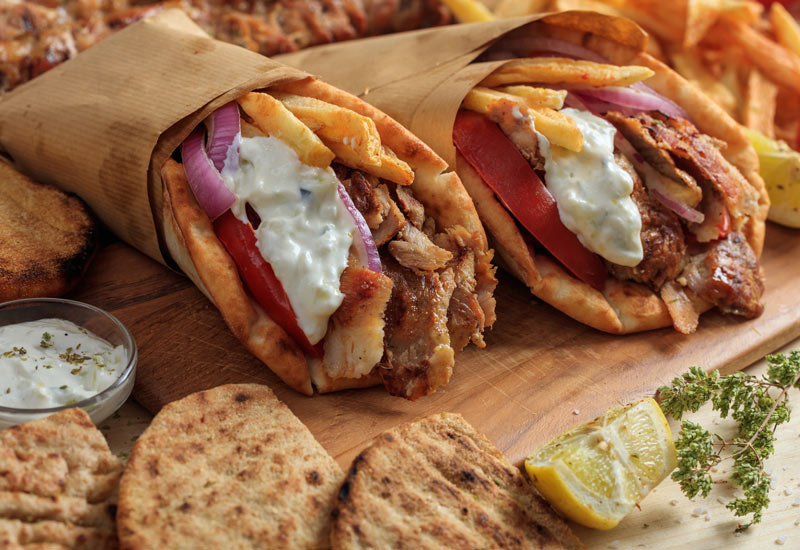
Recent Comments